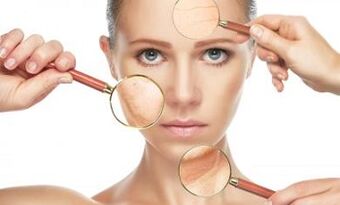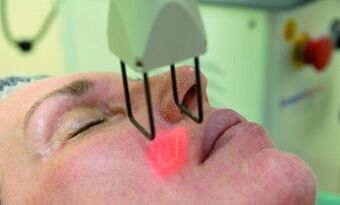
The external manifestations of skin aging are wrinkles, enlarged pores and loss of skin freshness. The aging process is hardly shown in the early stage, so it has not attracted much attention, but at the age of 25, the first signs of wilting have appeared: the swelling is reduced and the texture is changed. After that, the skin gradually becomes thinner-blood vessels become obvious and areas of pigmentation appear.
To restore the youthful state of the skin, it is not enough to simply eliminate the visible manifestations of aging-the vitality of cells, the natural mechanisms of cell renewal and growth must be restored. As a result, the skin will not only regain a fresh look, but it will also become younger. Beauty achieved a real breakthrough in 2004, when a segmented photopyrolysis method was proposed to treat age-related skin changes. This technology has been proven and clinically tested-it is proven effective for wrinkle correction and skin rejuvenation.
Practical applications also show that partial photopyrolysis is easy to tolerate, safe and has high performance in eliminating beauty defects and restoring youth. Today, it has become one of the most reliable and promising methods for repairing and tightening the skin, and is recognized as the "gold standard" for solving beauty problems. In addition, it is a modern and safe alternative to surgical skin lifting.
How the patient feels during the operation

An overall and pleasant advantage of the fractional photopyrolysis procedure is that it is painless-only topical anesthesia is used, and the sensation is limited to a slight tingling sensation in the area treated with the laser beam.
The anesthesia is performed before the start of the treatment and lasts as long as one hour-the time varies according to the size of the surface to be treated.
After completing the process, the expert will immediately advise the patient to lubricate the skin with milk fat and provide detailed care instructions.
It should be noted that further no special skin care is required, and you can go home by yourself.
Recovery period
If the surgical intervention requires a long recovery period before, then the segmented laser rejuvenation method will not take too much time: it only takes a week to return to the usual rhythm of life: the time depends on the intervention method (ablation, non-ablative). In the first two days after the operation, the skin may be slightly swollen, redness appears on the first 2-4 days, and the dead cells begin to fall off on the 4-7 days, releasing healthy and beautiful skin for breathing and development.
You can make sure that a partial photothermal decomposition procedure can quickly make your skin younger-after applying the ablative exposure method, the skin is tightened almost immediately, and usually, after a week, the wrinkles start to smooth out and the skin tone becomes even, The skin texture is improved, and the ellipse of the face becomes clearer. In order to consolidate and maximize the results, several steps must be performed-approximately one month apart.
After all the steps are over, the low-dose laser rejuvenation can last up to six months and the effect can last for several years. In many ways, the results depend on the patient’s lifestyle-following the procedures prescribed by the doctor to protect the skin from rejuvenation can significantly slow down the aging of the skin.
Combine with other rejuvenation methods
Many patients who seek to enhance the skin rejuvenation effect hope to combine some laser skin rejuvenation with botulinum toxin injections and fillers. In this case, there are no contraindications-special studies have confirmed that some of the laser's effects on collagen and hyaluronic acid fillers are safe. For those who wish to have laser skin rejuvenation and botulinum toxin injection on the same day, there are no restrictions, but in order to maximize the skin rejuvenation effect, it is recommended to complete part of the laser skin rejuvenation process first. Most likely, the results obtained do not require any extra effort to restore the beauty and youthfulness of your skin.
Contraindications of the procedure
If there are general treatment contraindications, low-dose laser rejuvenation should not be performed:
- Benign and malignant tumors in the treatment area.
- Oncological diseases, radiation and chemotherapy.
- Dermatological skin diseases in the surgical area, cutaneous skin diseases.
- Family history of vitiligo.
- Herpes infection occurred last month.
- History of keloid.
- Acute infectious disease or impaired immunity.
- Chronic diseases (diabetes, systemic connective tissue diseases, coagulopathy, thromboembolic diseases. )
- Tanned or tanned in the last month.
- Use oral retinoids within the past 6 months, or use topical dermatological medications with retinoids within the past 2 weeks.
- Pregnancy, lactation.
- mental illness.
If the process has contraindications, in order to ensure health and safety, you should temporarily abstain. The same fractional laser skin rejuvenation process is completely safe.















































































